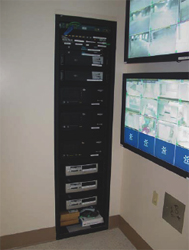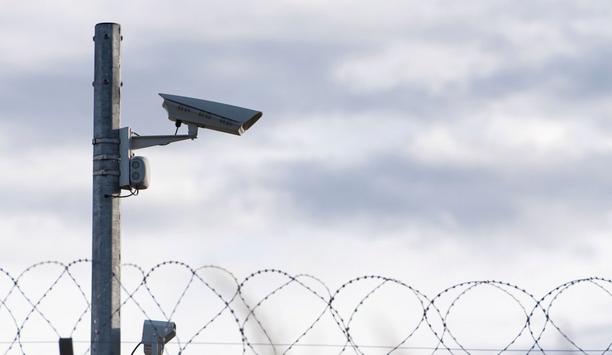When the security team at Palmetto Health Baptist, an acute care Medical Center in Columbia, S.C., invested in an upgrade to their surveillance cameras from black-and-white to colour, they did so with the expectation that it would significantly improve the quality of video they were capturing. Unfortunately, this turned out to be the equivalent of putting new paint and tires on a car that really needs a new engine. In the hospital's case, the new cameras only made it more evident that its entire signal transmission and recording infrastructure was obsolete and that, without replacement, the system was simply not capable of providing the quality of picture and recording required.
With three medical office buildings, three parking garages, an employee office building, plus the five buildings comprising the medical centre complex itself, Bernard Bourne, security manager for the hospital, knew that more was needed to bring state-of-the-art security to this 21st century medical complex.
"We are located in the downtown area, four blocks from the state capital," Bourne says. "We have everything going on around our hospital. Our campus footprint stretches across several city blocks with city streets going in between our buildings. When we started out, we were using old VHS tapes and were recording at three locations."
"We weren't doing a good job of capturing anything, because the way the video was multiplexed and then recorded to tape, we were losing too much detail. There was very little, if anything, that was acceptable for use in prosecuting cases in court," he adds.
For example, in one specific instance, a female employee of the hospital had her purse snatched and was then dragged up a flight of stairs - all on supposedly "protected" hospital property. However, when video was reviewed that should have captured the event on tape, the only preserved image was that of the employee by herself on the stairs. There was nothing recorded that could help identify the perpetrator. This incident made it eminently clear that it was time for a better system.
"The solution was to invest in a top-of-the-line system," Bourne says. "We went out for bids and looked at quite a few equipment brands. Everything we wanted, Vicon was either able to do or would be able to do with their next software release. We made a decision and went with the ViconNet digital video management platform."
Putting things in place
When it came to the installation, Bourne found the process to be fairly simple - so much so that he did it himself! "Most of the equipment was installed by me with the help of one other person at the hospital," Bourne says.
"We had a contractor run some additional video line and AC power lines, but since we already had existing CCTV systems running, we just disconnected the old monitoring and recording equipment and were able to hook up the new system, set it up and put it on the network. It was user-friendly enough to do that. I needed very little help from the distributor or Vicon. It was like hooking up a DVD player at home."
The hospital started out monitoring roughly 130-135 cameras, most of which they shifted over from their previous system. In some locations, Bourne changed out the existing camera to put in pan-tilt-zoom.
 |
| Pan-tilt-zoom cameras replaced some of the existing cameras in some parts of the hospital |
"We took the Kollector Elite 240," Bourne says. "All those systems have 900 gigabyte hard drive capacity. We had 16 of those. We also took two additional Kollector Elites and added RAID units for extra storage." The hospital uses the extra storage to maintain a disaster recovery site, he explains.
"We record in five individual locations. We have also connected the systems to the hospital computer network. The disaster recovery is located offsite. It records every camera on the network 24/7 as a backup. You could literally set one of the recording locations on fire, and still have the information up to the point that the network was disconnected to see what happened at the backup location."
Setting up this system required the cooperation of the IT department. "We weren't on the network before," he says. "Vicon did a good job of showing IT the bandwidth we'd be using. IT didn't have any problems with it. Whenever I was setting up an area, I told IT what connections I needed, they gave us the IP addresses for them and we went up and started working."
Bourne says he took about three months to get everything changed over. He would change out one recording location and let it run for several weeks before moving to the next location. "And that was with me doing my regular job as well," he adds.
Difference between night and day
Since the initial installation was completed at the beginning of 2004, Bourne has noticed big benefits to the new Vicon system. "We've had a lot of usable video for prosecution," he says.
"Just the other day there was a bank robbery down the street. The police weren't sure which direction the suspect went. Our outside cameras were able to help. We also have a guy in jail right now awaiting trial, accused of stealing a large amount of computers from us. We have excellent video on that too."
Beyond the evidentiary value, Bourne is pleased with the system's ability to view from multiple locations with any combination of cameras. "The technology is state-of-the-art," he says. "It's like night and day. We can do everything we always wanted to do. We have map overlays where we can put a map of the building up, click on a camera icon and it automatically brings up cameras for that area."
And perhaps most importantly, Bourne says, the hospital employees feel safer with the system. "It provides peace of mind for our employees. It's an extra sense of security because they know now that we are watching. It gives them an extra eye in the sky."
 |
| Vicon has helped provide peace of mind for the hospital's employees |
Bourne is pleased to work with Vicon. When he had some ideas for a software change to one of the products, the manufacturer asked him if he would test the product. As a result, the hospital now acts as a beta site for Vicon. This has led to the hospital's adoption of some new technology that has been released since their initial installation. "We have beta tested IP cameras, servers and domes," Bourne says.
The hospital is in the process of purchasing a new building in the fall. Bourne has already ordered the Vicon equipment for that building, including the IP equipment he has beta tested at the main hospital. "We are adding the IP equipment," he says. If the testing phase continues to go as well as it currently has," the IP server will be a tremendous benefit for us. If I have a problem arise, I will be able to take cameras to an area, plug them into the IP Server and the server into the network, and boom - we have video coming from that area. No more massive amounts of cable to pull."
Bourne also has plans for expansion on the main system. "We have two out of the three parking garages fully operational with cameras," he says. "The third garage has one floor completely installed. The five upper floors have limited camera coverage and need to be fully installed. There is also a warehouse about a mile away that will be hooked into the Vicon system."
"The greatest benefit to me," adds Bourne, "is that I can take my laptop and connect to the internet anywhere outside the hospital, access our VPN and can view cameras, control cameras or make administrative changes to the camera systems layout or functionality."












